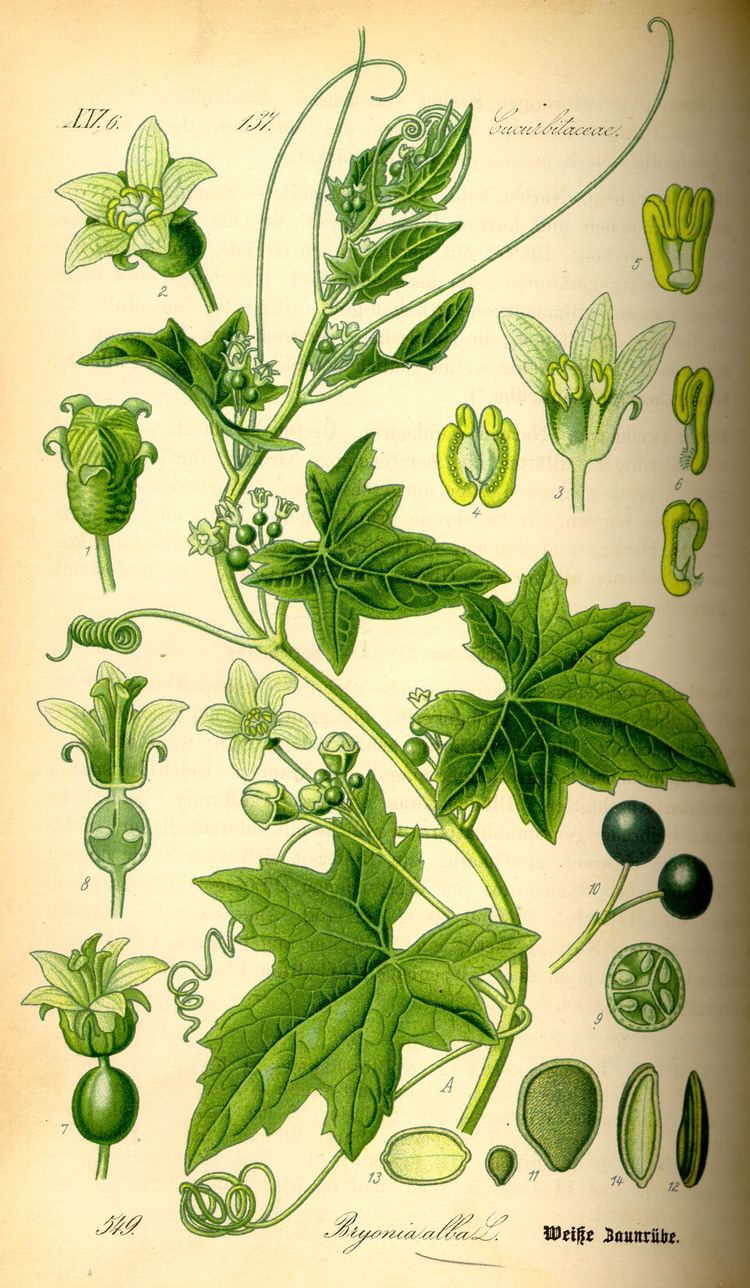Tribe Benincaseae Scientific name Bryonia Rank Genus | Subtribe Benincasinae Higher classification Cucurbits | |
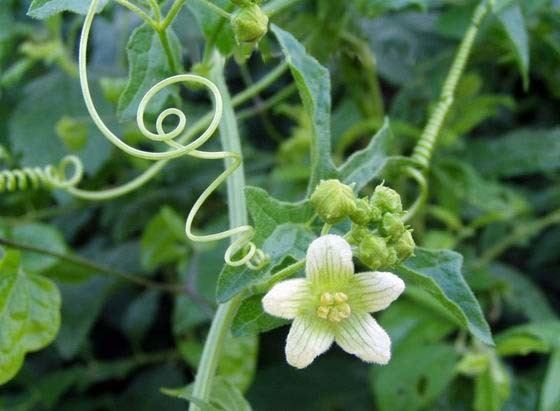 | ||
Lower classifications Bryonia dioica, Bryonia alba | ||
Bryonia bryony bryon a poisonous plants eiturjurt eiturber villijurt klifurjurt
Bryonia is a genus of flowering plant in the gourd family. Bryony /ˈbraɪ.əni/ is its best-known common name. They are native to western Eurasia and adjacent regions, such as North Africa, the Canary Islands and South Asia.
Contents
- Bryonia bryony bryon a poisonous plants eiturjurt eiturber villijurt klifurjurt
- Bryonia alba homeopathic medicine tips for beginners
- Description and ecology
- Use by humans
- Species
- Formerly placed here
- References
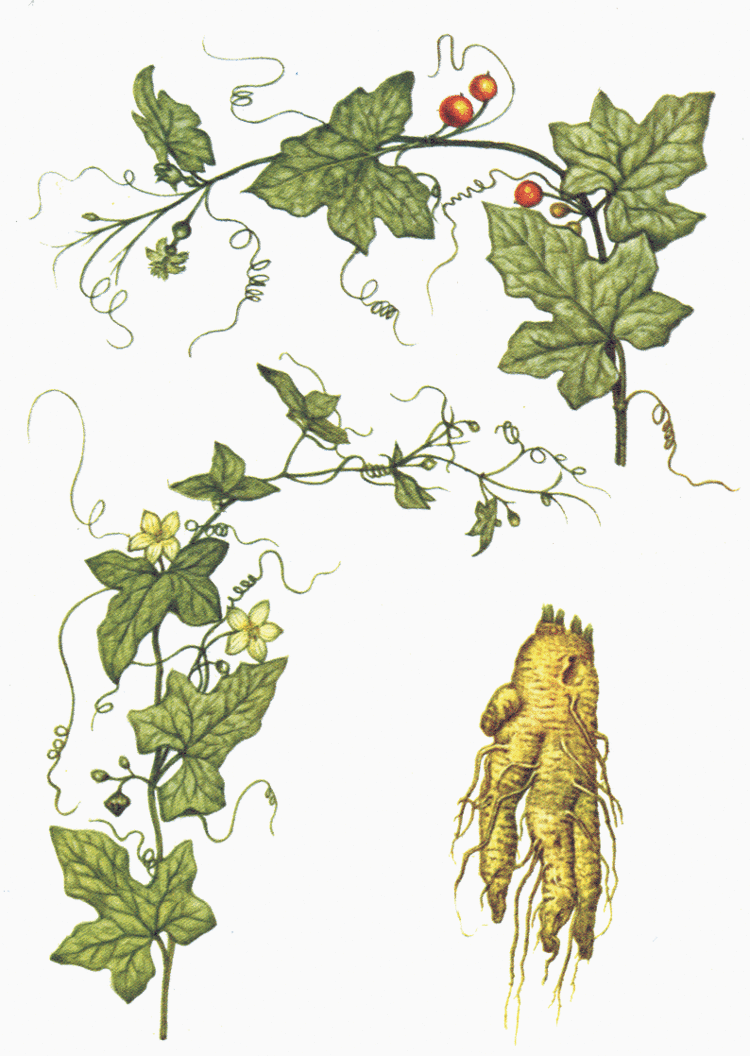
Bryonia alba homeopathic medicine tips for beginners
Description and ecology

Bryonies are perennial, tendril-climbing, diclinous or dioecious herbs with palmately lobed leaves and flowers in axillary clusters. The fruit is a smooth, globular berry.
The only English species, B. dioica (white bryony), grows in hedgerows as far north as Yorkshire.
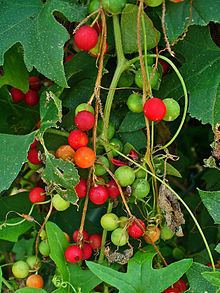
Bryonia is used as a food plant by the larvae of some Lepidoptera (butterflies and moths), including the tortrix moth Phtheochroa rugosana (recorded on red bryony, B. dioica) and the Cabbage Moth (Mamestra brassicae).
Use by humans
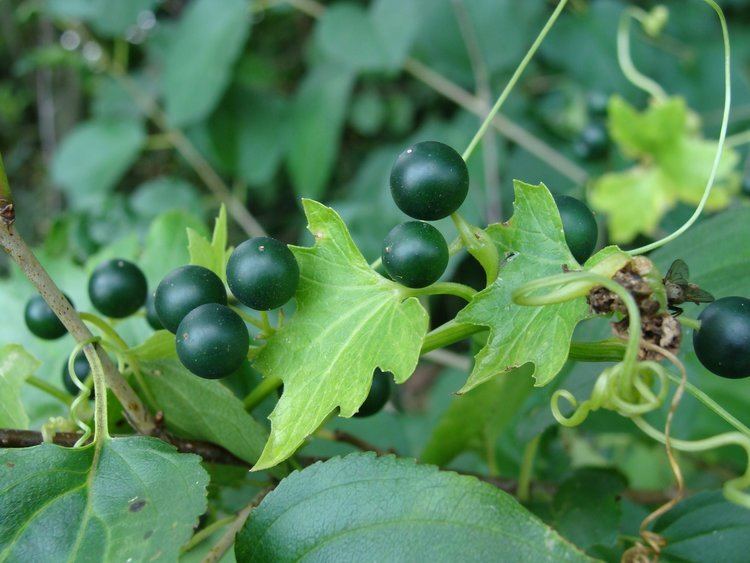
Bryonies are occasionally grown in gardens, sometimes accidentally, sometimes deliberately so. Some species find use in herbal medicine. Generally however, these plants are poisonous, some highly so, and may be fatal if ingested. Cucurbitacin glycosides are primarily responsible for the plants' bitterness and emetic effects.

Variants of the plants' name, such as Briony, Bryonie and Bryony, are used in some cultures as female given names. They were quite popular in the 18th century.
The Royal Navy of the United Kingdom named two ships HMS Bryony after the plant.
Species
Twelve species are presently accepted by the USDA: Ten of these are supported in a molecular-phylogenetic analysis:
